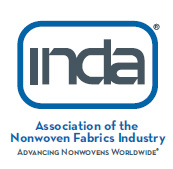 Richard Al Hadi
Richard Al Hadi
Postdoctoral Scholar, UCLA
Dr. Richard Al Hadi received the engineering diploma from Caen's National Graduate School of Engineering in Electronics and Applied Physics and the Master degree from the University of Caen Basse-Normandie, France, in 2009. He received the Ph.D. degree, summa cum laude, from the University of Wuppertal, Germany, in 2014. He has joined the University of California, Los Angeles (UCLA) in 2015 as a Postdoctoral Research Fellow. Dr. Al Hadi is a member of the IEEE society and is the co-recipient of IEEE best paper awards.
Wednesday 11:00 am - 12:00 pm
Innovative Hygiene Technology I
Electronic Sensors for Quality Control Applications for Nonwoven Products
Today, we can hold super computers in the palms of our hands. This has been made possible with over a half century of breakthrough technologies and scientific research. Nano-scaled technologies have substantially contributed to this success by making computers smaller and smarter. As a result, industrial sensors are becoming smaller, autonomous, and connected to the global network. The hygiene industry can greatly benefit from this success by integrating smart sensors to the production chain. One of the important aspects of production is monitoring the distribution of raw materials during the fabrication process without compromising the speed of the production line and the quality of the end product. Optical imaging sensors are one of the tools to address this need. However, they are limited to surface analyses and are unable to reveal contents in sealed hygiene products. Research efforts at University of California, Los Angeles has addressed this issue over the last few years by introducing novel imaging sensors that are capable of revealing more information than traditional sensors. Combined with adapted computing power and novel high speed algorithms, this technique will greatly impact the hygiene industry by improving yield rate, production efficiency, and quality; controlling costs; and limiting the environmental impact.



